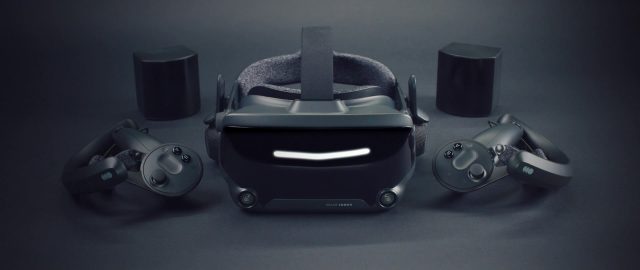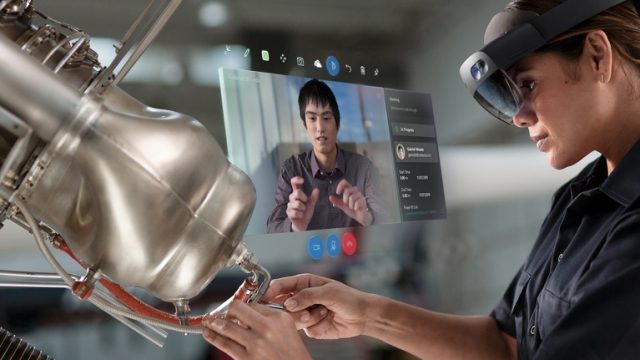VR device: Valve Index

| Resolution | 1440 x 1600 |
| Refresh Rate | 80, 90, 120 or 144 Hz |
| Field of View | Adjustable, up to 130 degrees |
| Face Cushion | Affixed to removable face interface, foam covered in anti-microbial microfiber cloth |
| Weight | 809g |
| Price | US$999 (incl. 2 controllers and 2 base stations); US$499 (headset only) |
| Battery | ~6 hours |
As an avid gamer, the main use I would find for VR headsets would be of course for games. Hence, after looking through the newest headsets, I thought that the Valve index seems to be the best VR headset currently due to its great hardware specs, comfort, long battery life and high tracking quality.
The index offers excellent resolutions at custom refresh rates, and in particular the 144Hz refresh rates makes pictures crystal clear. This is compared to other headsets that often offer limited refresh rate selections, though perhaps at slightly higher resolutions.
Although somewhat on the heavier side at ~800g without cables, users have given good reviews on its comfort. Reviews included how the head straps distributes weight well over a user’s head, and positive comments were made on how the straps were of high build quality.
On top of this, the index offer a great ~6h battery life, which is more than enough for most average users. Constantly having to bother with charging the battery would be annoying, and in my personal experiences with consoles, having to stop a game mid-way due to dead batteries is the worst feeling.
Lastly, the index comes with what many users have reviewed as the ‘best’ tracking technology. The index offers two base stations that track user movement effectively, along with novel controllers that convey a person’s actions effectively into the games. This allows games like Valve’s half-life:Alyx to truly shine, and offering users an experience other headsets cannot emulate.
That all being said, all this comes at a whooping cost of $999, which compared to the competition, is twice the price. This is likely to be a deal breaker for many people, which is a shame, since the hardware and software makes the Index likely the best headset available on the market right now.
MR device: Microsoft HoloLens
As I personally do not have any experiences with AR devices or their applications, I first sought to find what these devices could do and what some user favorite applications were.

Interestingly, although the market seemed to be rapidly growing, I did not find any of the popular applications to my personal interest. I would personally use AR glasses for purposes you would use a phone for, such as GPS, calorie counting, routing, and so on, but there did not seem to be readily available apps for such things. There were specific AR devices for things like cycling (which I enjoy), such as the Raptor EverySight, but the application itself seemed very lackluster when I saw it on youtube, especially when one considers the hefty price of US$599.
That said, I do find applications using Microsoft’s HoloLens to be the most interesting compared to its competition. It seems that HoloLens has found great success with industrial manufacturing and healthcare, along with healthcare education.
For manufacturers, HoloLens provides greatly improved guidance, allowing workers to be much more productive. The guided workers are able to have accelerated work processes, increasing productivity by decreasing errors.
For healthcare and healthcare education, the HoloLens provide a level of clarity for both patients and students alike that cannot be emulated through conventional means of communication. Patients are able to use the lens to very effectively see what they are suffering from and what the treatments might entail. For students, they are able to interact in situations that are otherwise dangerous or impossible in a conventional setting, allowing improved understanding and ability.
This is very hopeful for AR applications, because it showcases how good applications with good hardware can effectively improve situations. Both the manufacturing, health and education sectors have shown great numbers of improvement through the use of HoloLens, which may translate to other sectors in due time when proper applications are developed.
Nevertheless, despite the benefits, these HoloLens applications are customized for the manufacturing companies, which makes it less accessible to the average user. This might mean a very long wait time before AR applications could be valuable to the average user, which is rather disappointing considering how long many AR devices have been around for.

